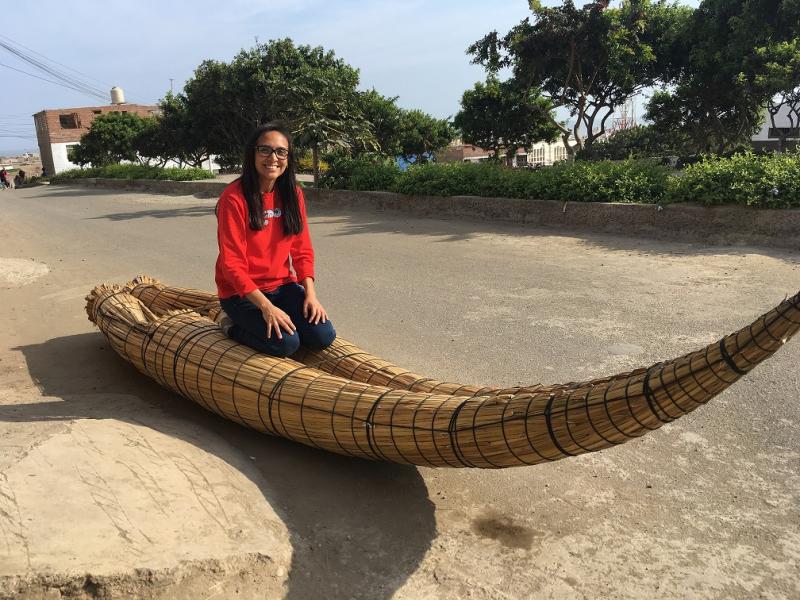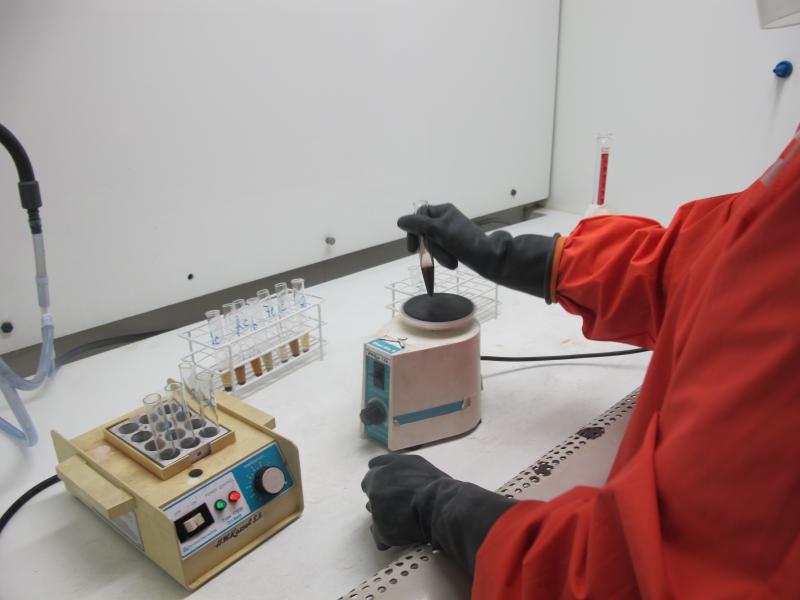Fishing for Ancient Plant Knowledge in Coastal Peru
Fishing for Ancient Plant Knowledge in Coastal Peru
By contributing author Maia Dedrick, photos courtesy of Rossana Paredes
Each year, the Society of Ethnobiology honors a young ethnobiologist for the quality of their research and for their excellence in communicating their knowledge at our yearly meeting. Meet the 2018 Barbara Lawrence Award winner, Rossana Paredes!
Each morning, Rossana and her team searched for plants that grow in the diverse habitats of coastal Peru. In one instance, they collected leaves and flowers from a tree growing along a riverbank, forming a human ladder in order to retrieve the samples. Another time they crossed a dense area of plants with large spines that stuck into their clothes and bodies while in search of samples. The benefits of working to find plants in the fields and forests included that the team arrived home with potatoes, yucas, and other vegetables to cook and serve with fresh fish. After lunch, they constructed reed boats and wove mats to be sold in the local market. Rossana also learned how to prepare medicinal teas and juices from the plants they had collected. As she learned the traditional ecological knowledge regarding plant use in a fishing village, Rossana enjoyed a natural and healthy way of living.

Barbara Lawrence Award winner Rossana Paredes in the field
Rossana Paredes is an ethnobotanist who works along the north coast of Peru, and specifically in the fishing community of Huanchaco. She studies not only the ways that people used plants in the past, but also the ways that people continue to use plants today based on their traditional ecological knowledge (TEK), passed down through generations. The north coast of Peru is an area where archaeologists have studied many prehispanic sites in order to reconstruct ancient lifestyles. However, few have specifically studied patterns of plant use in the past. Rossana finds it intriguing that some of the same plants found to be in use based on evidence from the archaeological record can also be found in use today. She collects contemporary and ancient information to study how plant use has continued and changed through time.

Learning how to construct reed mats
It’s a bit unusual to study plants in a fishing community. Research in fishing communities often focuses on economies and interactions with the sea. Nonetheless, plants play an important role in Huanchaco and other fishing communities. People today use their knowledge of plants for subsistence, or the provision of their food and livelihoods. For example, plant foods rich in carbohydrates nicely complement diets otherwise rich in marine proteins. In fact, Rossana often finds herself working with other archaeologists who focus on human subsistence using other techniques, because together they can provide a fuller picture of ancient diets. People also use reeds that they grow in their gardens to construct artisanal boats, necessary to continue their fishing lifestyles. Plants can also be used as medicines, and residents of Huanchaco collect flowers and leaves to prepare teas and other remedies that can treat illness and disease.

Collecting ancient plant remains from an archaeological site.
In particular, Rossana explains that her dissertation work “focuses on the study of the relationships between the fishing community of Huanchaco, a beachside town of about 68,000 people located in northern Peru, and the botanical resources found in that territory.” Her methods of study include investigating plant remains present at the nearby archaeological site of Gramalote. Those that can be seen with the naked eye include stems, seeds, and flowers, which preserve in the dry, desert environment of northern Peru. They can be found by screening and floating sediment excavated from locations around houses and ceremonial areas. Some of the plant matter that cannot be seen without high-powered microscopes include pollen, starch grains, and phytoliths. These can be sampled from sediment or directly from stone tools or other artifacts. Using all of these techniques, Rossana considers where different types of evidence for plants have been found across the site to make inferences about how people used plants in the past. She doesn’t stop at the archaeological evidence, however—she also conducts plant surveys and collects modern specimens as comparative material.

Back in the lab, Rossana extracts pollen grains from her samples.
Through interviews with community residents, Rossana learns about and observes how people use plants in the present, which helps her to identify past plant uses. While Rossana enjoys every step of her research, she especially loves learning from community members and participating with them in their daily activities. When working with residents of the community of Huanchaco, Rossana introduces herself and explains her work and its purpose. She has come to know many people in the fishing community, who share information about her research and its purpose with others. They are excited and proud to know that their TEK will be recognized both inside and outside of Peru. Various influences of globalization have been changing TEK about plant uses in Huanchaco, so it’s important to record the information that remains intact before it goes extinct. Rossana’s research highlights knowledge that people have about plants and their uses as part of Peru’s cultural heritage, and she is well-equipped to demonstrate the deep time depth of this knowledge using both ethnographic and archaeological methods.
We thank Rossana for sharing her fascinating research with us and congratulate her on the award!


Comments (1)